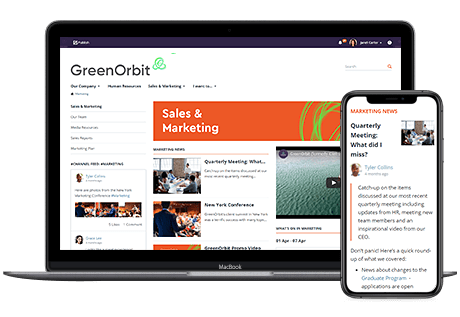
People are busier and more distracted than ever.
We live in a world where attention spans are 9 seconds long and 'content fatigue' is the new normal.
How do you entice time-poor employees to read (and act on) your carefully crafted intranet articles?
Here are 5 over-looked fundamentals that can make all the difference.
Maybe you've heard the adage:
"If you're marketing to everyone, you're marketing to no one"
Well, the same is true for that intranet article you're trying to write.
Start by asking yourself:
"Who am I writing this for?"
If your answer is "the employees in my company" - then your canvas is too broad.
You need to zero-in on the employee segment you want to engage. What are their particular needs, passions or pain points?
For example, let's say you want to tell everyone about the new office that just opened in Japan.
You could create an intranet article titled 'New Office Opens in Japan' and then go on to describe when it opened, where it is and include information about what the expansion means for the business.
Nice enough.
But, as an employee, why should I click to see beyond the headline?
Sure, I'm happy we have a new office but unless I can see what impact it has on me or on others in my department - I'm not likely to be drawn in.
To encourage engagement, look at how you can deliver the content in a more personal way - by targeting specific employee personas.
What's an employee persona? Glad you asked because here's a neat explainer video:
By understanding what motivates and inspires the different types of people in your organization - you have a better chance of engaging them.
Now, back to the Japanese office example.
Based on your new personalized approach, you could write an article targeted at the sales team:
Japan opens the door to new prospects
Or one that appeals to those in customer support:
What keeps our Japanese customers awake at night?
Think about ways to position your article to hit the sweet spot for a given persona.
To get started, you'll need to do a little research:
Know your objective
Now that you know who you're writing for - it's time to think about what you want your article to achieve.
There are two main questions to ask:
It's easy to fall into the trap of writing content for content's sake - but you should use your publishing power to make a difference.

While all organizations are unique, most are focused on one or more of the following:
Does your article move the needle on any of these objectives?
Does it help employees to do their jobs more effectively? Does it make them feel connected to their peers or part of a vibrant culture?
Purposeful content that is clearly aligned with your company's mission is more likely to engage employees (and win the approval of senior management).
Respect your reader's time
"I didn't get time to read that"
Sound familiar?
Lack of time is one of the major reasons your content goes unread.
With so much competition for their attention, employees often put internal communications on the back-burner.
Instead of lamenting this fact, look at ways you can lighten the cognitive load:
We've already looked at ways to personalize content based on employee personas but actually writing about people is another sure-fire way to improve engagement.
Tell stories about individual employees and demonstrate their value to the business. This doesn't have to be 'heavy' content - you can ask employees to describe their morning routines, give their productivity tips or share favorite recipes.
Also, write articles that bring customers into focus - this helps employees to see why their work matters and goes a long way to fostering employee engagement.
Use faces in your imagery - and, where possible, choose real people over stock photos.
According to Sally Hogshead, author of the New York Times Bestseller, Fascinate
Faces are so key to our survival, in fact, that we're born to be fascinated by them.
So now you have a persona-driven, easily digested, people-focused article with a catchy headline and fascinating imagery. Well done!
The next step is making sure people know about it.
Take care to add the relevant keywords, meta-data and #hashtags so that your article can be pushed out to the appropriate channels or found via search.
When you share the article on your intranet's social network, be sure to @mention individuals who might find it particularly useful.
Although you want to avoid broadcast email - you might consider sending out a round-up of the month's best articles.
What engagement strategies have worked for you?
We'd love to hear about your successes in the comments below.
